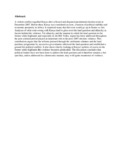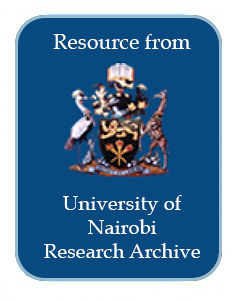Location
Our Vision is to be a world-class university committed to scholarly excellence.
Our Mission is to provide quality university education and training and to embody the aspirations of the Kenyan people and the global community through creation, preservation, integration, transmission and utilization of knowledge.
Core Values
In order to realize the above vision and mission, certain shared values shall be nurtured. There is great need for the University to be guided by the right values derived from the virtues and moral standards of the Kenyan and wider society.
Core Functions
Teaching and Learning: The university offers innovative , relevant and market driven academic programmes , both at undergraduate and postgraduate levels with inbuilt quality control systems the university also provides an environment and policy framework for undertaking high quality and relevant research
Members:
Resources
Displaying 151 - 155 of 298The legacy of the white highlands: Land rights, ethnicity and the post-2007 election violence in Kenya
A violent conflict engulfed Kenya after a flawed and disputed presidential election result in December 2007. Before then, Kenya was considered an icon, a bastion of political stability and economic prosperity in Africa. It surprised many that this icon would go up in flames so fast. Analyses of what went wrong with Kenya tend to gloss over the land question and ethnicity as factors behind the violence.
The Land Question in Kenya: Legal and Ethical Dimensions”, in Governance
Monsanto vs. Schmeiser: Implications for Land Rights of Kenyan Farmers
Effects of cotton growing on household food Security in arid and semi-arid lands: the example of Barwessa division in Baringo district Kenya".
This study was motivated by the need to understand the interplay
between cotton farming in Barwessa and household food security
in the area.
The study was centered on three main objectives:
• To examine the extent to which subsistence farming is affected by
cotton,
• To identify the relationship between levels of household food security
in relation to income and expenditure,
• To investigate women's access to income from cotton production, their
food production and food security roles,
Spartial distribution of trichodermia spp.in Embu and Taita Regions,Kenya
The distribution of Trichoderma species in soils of
Embu and Taita benchmark sites in Kenya with
relation to land use practices was investigated. The
study areas were chosen because of their significant
land use intensification and for being biodiversity hot
spots. Soil washing and dilution plate techniques were
used to recover Trichoderma spp from the soil samples
collected from different land use types. The fungal
isolates were identified and assigned to nine species
from Embu soils and eleven species from the Taita



